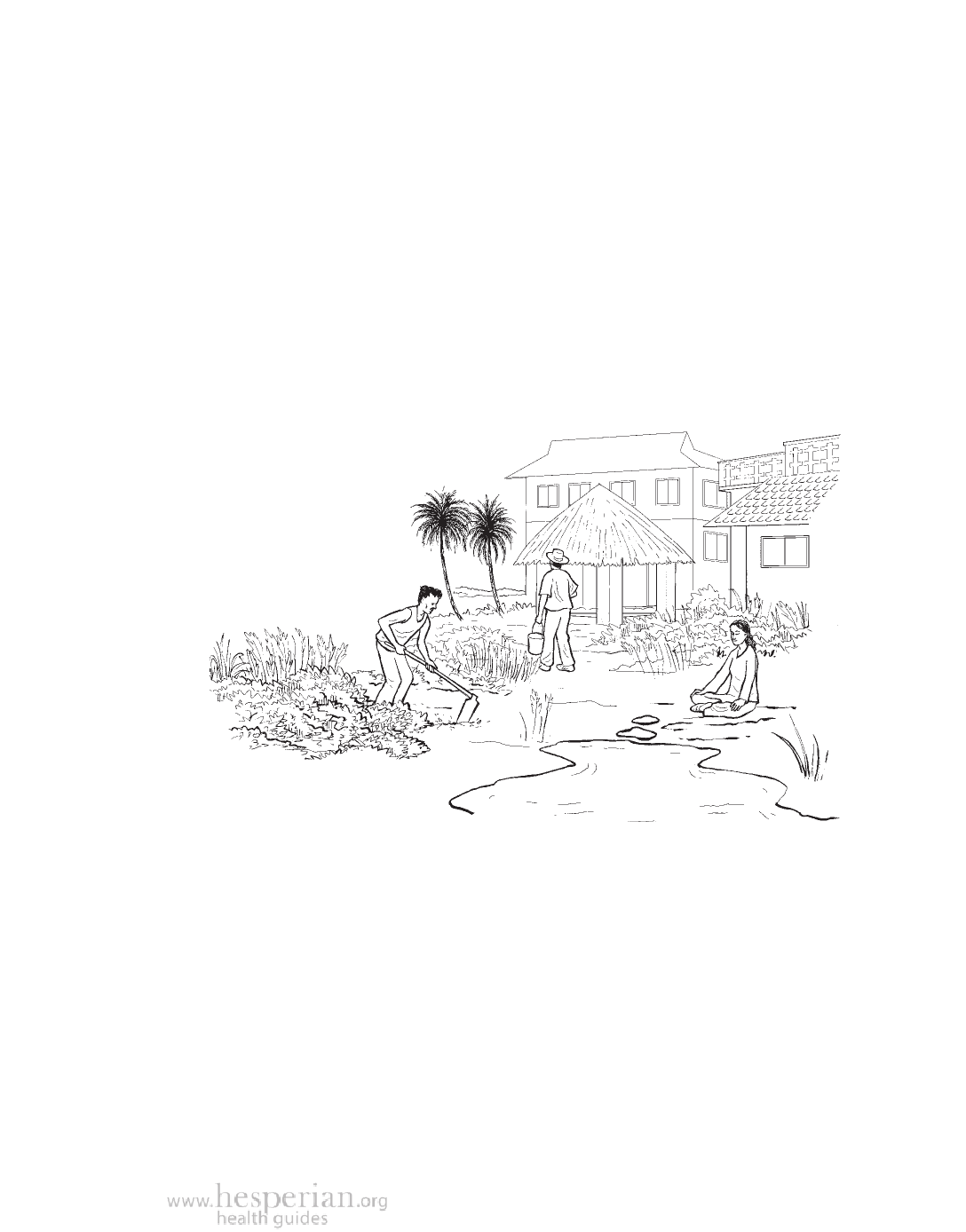
how toxic substances ge t into our bodies
The Sambhavna Clinic is a model of environmental health. It was built and
operates as safely and sustainably as possible. For example:
• Only hot water and soap are used to clean the clinic, to make sure that
no one is harmed by toxic cleaning products.
• Clinic workers started a garden to grow plant medicines. No chemicals
are used in the garden. People treated at the clinic work in the garden
and collect their own herbs for treatment.
• When new clinic buildings are needed, only nontoxic building materials
are used. The buildings use local materials, and are designed to allow
natural light and air to pass through.
• Rainwater is collected from tiled roofs during the wet season and stored
in underground tanks, providing water for the dry season.
• After water is used for washing,
it is piped into a pond and then
irrigates the grounds and
the herb garden.
• Electricity is made
by solar panels,
which cause very
little pollution.
41
The Sambhavna Clinic shows how achieving health for all means not only
treating the sick, but preventing illness in the first place. Their example of
reducing harm from toxics can be followed in schools, businesses, government
offices, and our homes. But even if we change our homes and institutions
to make them healthier and more sustainable, all of us, especially the most
vulnerable, are still at risk, as long as industries continue to produce and use
toxic substances. (To learn more about the Sambhavna Clinic, see page 345.)
A Community Guide to Environmental Health 2012